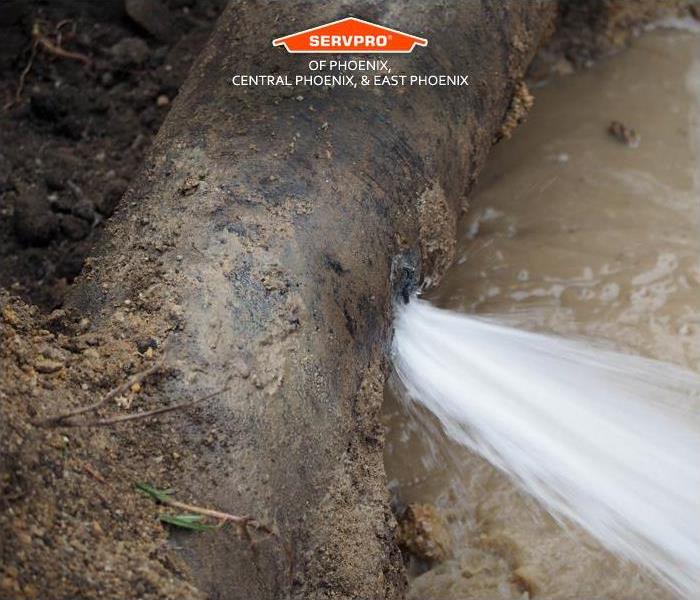What to Do After a Water Main Break
9/25/2019 (Permalink)
It’s unfortunate and overwhelming, but when a water main breaks, what to do next is very critical. A break in a water typically affects roads and the surrounding properties, causing a lot of water damage to residential and commercial property. If you live or own property near a water main, you are also at risk of costly water damages if and when the main breaks. What is a water main and what are the common signs of a break, and what should you do after it happens?
What is a Water Main
The main pipe that provides water throughout the city is called the water main. Typically, most water mains and other pipes are all under the city grounds. Today, water mains are constructed of concrete cement. A lot of the old water mains were constructed of cast iron, and the really old ones were made of galvanized steel. Though they are very sturdy upon installation, when they break, thousands of dollars in water damages caused by the water main break leave everyone feeling overwhelmed.
Things You Should Do After Water Main Break
- One of the first things you should do after the main water line breaks is call the Phoenix Water Department and report what happened. The sooner they are aware of the issue, the sooner services will resume normally and water damages are mitigated.
- Limit the amount of water everyone uses while the water main break is letting out water. Do not drink the tap water and avoid using the bath or shower, laundry machines, or the dishwasher. Some situations will have the local authorities issue a warning to boil all water. Boiling water for 5 minutes should suffice.
- Look around your property and see if there are any water damages. Walk all around starting from the crawlspace or basement and work your way up. Document any damages from the water main break that you find. Then call your insurance and SERVPRO of Central Phoenix, your trusted emergency water damage specialists who are available 24/7 every day with an immediate response.
- When the water main break has been repaired or replaced, run all faucets and hoses until the water is clear. Run the dishwasher and the washing machine without soap a couple of times and then a third time using soap only.
- You should then flush out your hot water tank by opening the hot water tank faucets and let them run until the water turns cool. Repeat this process a second time after about an hour so that the sediment inside will clear out.
- Inspect the aerator on all the faucets for any debris. You many need to replace some of the aerator screens, but make sure they are all clean of any debris. Any under sinks or house water filtration systems should have their filters replaced also.
- Don’t forget the water dispensing systems on the refrigerator. Run the water for several minutes and then change the filter. With ice makers, let it continue to make ice, but refrain from using any of it for several days.
What Causes a Main Water Line Break?
Although there a hundred ways a water main will break, one of the more common ways is due to the age and the environmental temperature. Since installation, a water main goes through a lot of wear and tear which can lead to a failure.
When colder temperature begin to freeze the ground, the ground begins to harden and contract putting immense pressure against the water main. Seldomly, the water inside can freeze as well which then adds pressure pushing out from within the water main. Warmer and drier temperatures tend to make the grounds shift, crack and settle which causes some twisting and the water main breaks spraying water until help arrives
If you live or work near a water main, keep an eye out for any signs of it breaking and be sure follow these tips to prevent and mitigate water damage.






 24/7 Emergency Service
24/7 Emergency Service